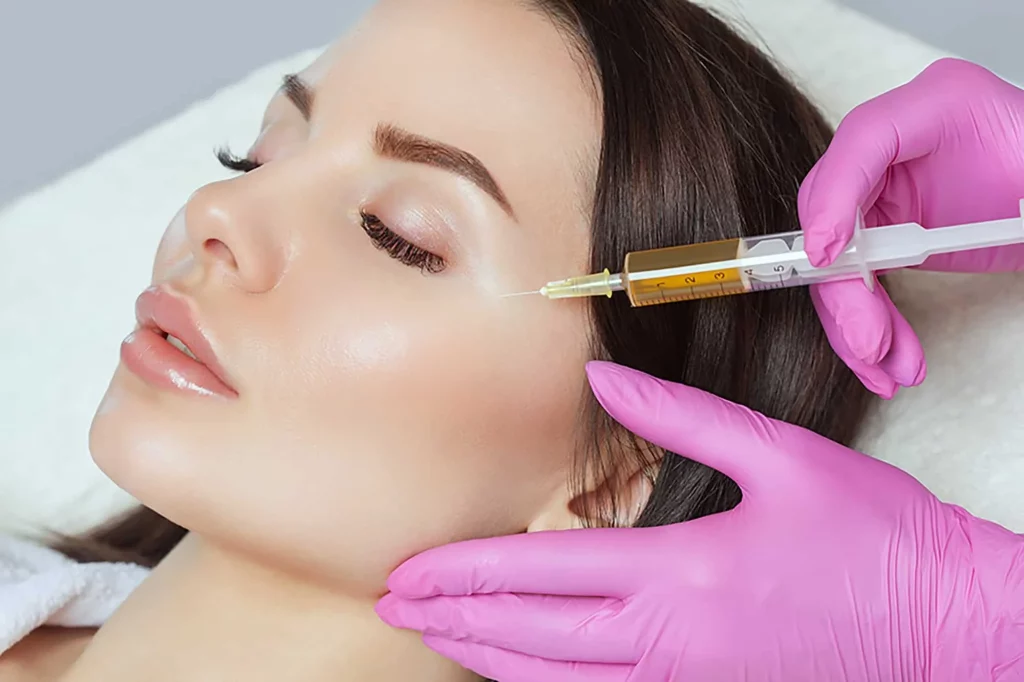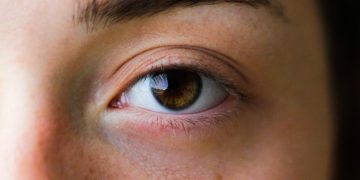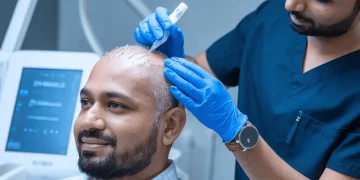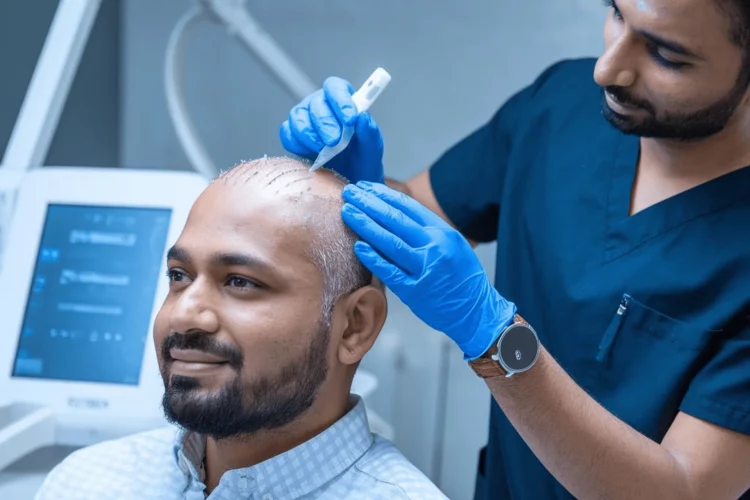In an era where aging gracefully has become as much about science as it is about lifestyle, the field of regenerative aesthetics has emerged as one of the most fascinating frontiers in modern dermatology and cosmetic medicine. Once limited to fillers, lasers, and chemical resurfacing, aesthetic treatments are now shifting toward cellular rejuvenation—an approach that seeks to repair and regenerate tissue from within rather than simply conceal signs of aging.
At the center of this movement are stem cells and platelet-rich plasma (PRP) therapies, two biologically driven technologies that promise to awaken the body’s own capacity for renewal. But how do they work? How do they differ? And most importantly, what does clinical evidence actually say about their effectiveness and ethics?
This article explores the science, evidence, and ongoing debate behind regenerative aesthetics—where biology meets beauty.
From Anti-Aging to Regeneration: A New Paradigm
Traditional aesthetic medicine has long focused on managing symptoms of aging—wrinkles, volume loss, pigmentation, and skin laxity—through topical or structural intervention. Botox relaxes muscles, fillers restore volume, and lasers resurface the skin. But none of these treatments restore biological youth.
Regenerative aesthetics, however, takes a fundamentally different approach. Instead of patching or plumping, it leverages cellular repair mechanisms—the same biological systems that heal wounds or renew tissues after injury—to rebuild healthy skin structure at a molecular level.
The key agents in this field are autologous biological materials, primarily platelets, growth factors, and stem cells derived from a patient’s own body. These substances can activate fibroblasts, enhance collagen production, and stimulate angiogenesis (new blood vessel growth)—all processes essential to youthful, resilient skin.
PRP Therapy: The Foundation of Regenerative Aesthetics
PRP, or Platelet-Rich Plasma, marked the beginning of regenerative treatments in aesthetics. It involves drawing a patient’s blood, spinning it in a centrifuge to isolate platelets, and then re-injecting the concentrated plasma into the skin.
Platelets are rich in growth factors—proteins that signal tissue repair, such as:
- PDGF (Platelet-Derived Growth Factor) – promotes cell proliferation
- VEGF (Vascular Endothelial Growth Factor) – enhances blood supply
- TGF-β (Transforming Growth Factor Beta) – boosts collagen production
- EGF (Epidermal Growth Factor) – stimulates epidermal regeneration
When injected, PRP creates a microenvironment of regeneration, prompting fibroblasts and keratinocytes to repair and thicken the dermis. This results in improved texture, elasticity, and glow, often described as a “natural radiance.”
PRP became widely popularized through the so-called “vampire facial,” where micro-needling creates microchannels for plasma absorption. Though initially dismissed as a fad, clinical research has since validated PRP’s efficacy in skin rejuvenation, hair restoration, and scar improvement.
Clinical Evidence Snapshot:
- Studies have shown increased dermal collagen density after three PRP sessions spaced one month apart.
- Improvements in fine lines, pore size, and skin elasticity typically appear within 4–8 weeks.
- Minimal side effects, as PRP uses the patient’s own blood (autologous treatment).
Still, PRP is limited by its biochemical range—it relies on the growth factors available in platelets, without introducing new cellular activity. This is where stem cells enter the conversation.

Stem Cell Therapy: Beyond Growth Factors
If PRP represents biological stimulation, stem cell therapy represents biological transformation. Stem cells—undifferentiated cells capable of developing into specialized tissue types—offer an entirely new dimension to beauty medicine.
In regenerative aesthetics, the most common sources of stem cells include:
- Adipose-derived stem cells (ADSCs) – harvested from fat tissue via liposuction.
- Bone marrow-derived mesenchymal stem cells (MSCs) – extracted from bone marrow aspirates.
- Umbilical or placental stem cells – donor-derived, though subject to stricter ethical scrutiny.
These cells are often combined with PRP or exosomes (cell-derived vesicles) to amplify tissue regeneration.
Mechanism of Action:
Stem cells work through paracrine signaling—releasing bioactive molecules that encourage neighboring cells to repair, proliferate, and produce new collagen. They can also directly differentiate into fibroblasts or endothelial cells, contributing to tissue reconstruction and vascularization.
Unlike PRP, which primarily rejuvenates existing tissue, stem cells have the potential to regenerate entirely new tissue structures—reversing cellular aging rather than masking it.
PRP vs. Stem Cell Facials: What’s the Difference?
While both treatments fall under the regenerative umbrella, they operate on distinct biological principles.
| Aspect | PRP Facial | Stem Cell Facial |
|---|---|---|
| Source | Platelet concentrate from patient’s blood | Adipose tissue, bone marrow, or donor cells |
| Mechanism | Growth factors stimulate collagen and elastin | Cells regenerate and replace aged tissue |
| Onset of Results | Gradual (after 2–3 sessions) | Longer-term, often after 1–2 treatments |
| Downtime | Minimal (1–2 days of redness) | Mild swelling/bruising depending on source |
| Cost | Moderate ($300–800/session) | High ($1500–5000/session) |
| Clinical Validation | Extensive studies, widely used | Emerging evidence, ongoing trials |
In practice, many clinics now combine PRP and stem cells, arguing that growth factors “activate” the stem cells for faster and more consistent regeneration.
Clinical Evidence and Research Progress
Stem cell-based aesthetic treatments are still in the translational phase—bridging laboratory findings and clinical application. While small-scale human trials show promising results in scar repair, wrinkle reduction, and skin rejuvenation, large-scale randomized studies are still limited.
Key Findings:
- A 2022 study in the Journal of Cosmetic Dermatology reported that adipose-derived stem cells improved skin elasticity and hydration significantly over 12 weeks compared to placebo.
- Combination treatments using PRP + ADSCs demonstrated better collagen remodeling than either treatment alone.
- Preclinical research shows potential for UV damage repair and pigmentation normalization.
However, the longevity of results and long-term safety profiles remain active areas of investigation.
The Ethical Debate: Science Meets Morality
Stem cell use in aesthetics raises profound ethical and regulatory questions. While autologous (self-derived) treatments are generally accepted, allogeneic (donor-derived) or embryonic stem cells provoke debate.
The ethical concerns include:
- Source of cells: Use of fetal or embryonic tissue is heavily restricted.
- Informed consent: Patients must understand the origin and processing of biological material.
- Overselling outcomes: Some clinics exaggerate “stem cell rejuvenation” claims without evidence.
- Regulatory compliance: In many regions, unapproved cell-based treatments fall into a gray legal zone.
In the U.S., for instance, the FDA classifies most stem cell-based aesthetic therapies as biologic drugs, requiring clinical trials before approval. In Europe and Asia, regulations vary widely, with some clinics operating under medical tourism exemptions.
As the line between therapeutic and cosmetic use blurs, the field faces increasing pressure to establish ethical frameworks and standardized clinical protocols.
The Future of Regenerative Aesthetics
The next decade will likely see regenerative aesthetics move from experimental luxury to clinical mainstream, driven by technological innovation and consumer demand for natural, long-lasting results.
Emerging trends include:
- Exosome therapy: Nano-vesicles secreted by stem cells that carry growth factors and RNA. They’re cell-free yet potent, offering safer and more scalable alternatives.
- AI-guided cell profiling: Tailoring regenerative treatments to individual genetic and epigenetic markers.
- Hybrid biostimulation: Combining laser resurfacing, microneedling, and cellular serums for layered rejuvenation.
- Cryopreservation banking: Individuals storing their stem cells for future personalized rejuvenation.
Ultimately, regenerative aesthetics could redefine beauty medicine as preventive cellular care—not just reversing aging, but actively maintaining youth at the molecular level.
Expert Perspective: A New Kind of Beauty
Dr. Hana Ishikawa, a regenerative dermatologist in Tokyo, summarizes this paradigm best:
“We’re shifting from treating aging as damage to supporting the body’s ability to repair itself. True beauty medicine is not cosmetic—it’s cellular health.”
The convergence of biology, ethics, and artistry in regenerative aesthetics signals a transformation not just in how we look, but how we understand aging itself.
As stem cell science matures, beauty may soon become less about fighting time and more about partnering with biology—a future where medicine and aesthetics merge seamlessly into one regenerative continuum.













































